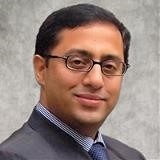Arogya World Fellow Mallika Rao interviewed Sukanti Ghosh.
 After two decades in strategic communications in India and in several countries around the world, Sukanti Ghosh brought his experience to help shape and deliver communications around Arogya World’s mDiabetes program in India.
After two decades in strategic communications in India and in several countries around the world, Sukanti Ghosh brought his experience to help shape and deliver communications around Arogya World’s mDiabetes program in India.
He was invited in 2011 to join Arogya World’s Global Behavioral Change Taskforce, a group of medical, scientific, health promotion, communications and consumer experts, seeking to break down strong scientific research into a series of compelling, easy to understand messages that would resonate with the average person in India and encourage them to adopt healthier lifestyles.
“I joined Arogya World out of personal interest,” he said. “The rising incidence rates of non-communicable diseases (NCDs) is alarming in India.”
The problem, he explains, operates on multiple levels: the lack of awareness around how medical conditions like diabetes or stress-related disorders can be avoided or later managed through proper eating habits, an active lifestyle, timely check-ups and proper medication – as opposed to self-medication, no medication or over medication, all of which are relatively common in India.
Yet despite the efforts of the government, civil society organizations, healthcare companies, and NGOs to educate people at large about these lifestyle diseases, and rising levels of health consciousness amongst the urban youth of today, the incidence of NCDs such as diabetes continue to grow in India at an alarming rate. (Statistics reveal that the people residing in India today have a 50 percent higher chance of developing Type II diabetes over people resident in the U.S).
Diabetes is also quite prevalent amongst Indians living in the U.S. According to Medscape, people of Indian decent are three times likelier to have diabetes, than white Americans.
Incidences of cancer are also becoming increasingly common in India as well. Per an article in The Times of India, the country’s leading mainline daily, there are an estimated 145 million Indians living with cancer in India and another 700,000 new cases reported every year.
However, India’s attitudes toward cancer and cancer patients is decidedly more negative than other forms of NCDs.
“Twenty years ago, people would possibly know of one person in their distant horizon who were suffering from cancer; ten years ago, these numbers became more pronounced; and, today, almost everyone has someone in the family who has suffered from the disease. The fact that very few people are ready to talk about the disease – even when they have fully or partially recovered – only helps to make the atmosphere full of doom and gloom as cancer is only associated with extreme suffering for the patient and family, expenses and death. Under such circumstances it is only natural for everyone to write on off as soon as they are diagnosed with the disease.”
Although Ghosh has been living in in Houston, TX only since November last year, he has travelled and lived around the world throughout his life. It is his 8-year long stint in India before coming to the US, his roots in the country, his passion with everything that has to do with healthcare, and his pain at seeing people embrace avoidable medical conditions as part of their destiny that, drives him to continue to try and make a difference.
Through his experience at Arogya World, Ghosh has seen an organization that has tried to do its part around changing the conversation around NCDs in India.
“Nalini has done a great job of trying to bring together a team of people with complementary skillsets to design communications solutions and human interventions that are knowledge, research and technology based, and through a process of positive stimuli attempt to trigger a new set of behaviours or reinforce a set of actions amongst a section of people who value informed choice. However, all of us agree that we haven’t even reached the tip of the iceberg. There are miles to go before we sleep.”
